Review: 2013 BMW 750Li – Video

The full-sized luxury market used to be a small pond before the Lexus LS appeared. Up to then all Mercedes had to worry about was the German brand known for their delightfully crude 2002. Jaguar? 1980s Jags spent so little time running they were more garage ornament than transportation. Fast forward to today and BMW is the new Mercedes and the full-sized luxury segment is getting crowded with entries from Audi, Porsche and an XJ that spends enough time running to count. Where does that leave the S-Class’ old foe? BMW tossed us the keys to their most popular 7 to find out.
Luxury cars are status symbols. Status can be two things however, buying something unique or showing that you can afford the same sedan as that guy from the country club. With that in mind, sales are important. In 2012 BMW nearly beat Mercedes in America shifting 11,098 7-Series vs 11,794 S-Classes making the 7 a popular and safe bet. If you’re looking for something less common, Audi shifted 6,002 A8s, the XJ hit 4,852 while that Japanese entry that rocked the boat in ’89 had a slow year at 8,345. Porsche moved 7,614 Panameras proving that you don’t need 5-seats to move your six-digit roller.
Because full-size luxury cars are low volume but important for brand image, frequent makeovers are more common than redesigns. Like many of its owners, the 7-Series went under the knife for a face lift, resulting in a blunter nose and larger grille openings along with redesigned front and rear lamps.
Interior
Mercedes ditched the short-wheelbase S-Class in America but can still get your Beemer in different lengths. BMW tells us the long-wheelbase 750Li (as tested) is the most popular flavor so that’s what we requested. Our tester started at $90,500 and mildly optioned it landed in our driveway at $113,000. Despite being a refresh year, little changed on the inside in terms of style and parts. Still, the dashboard and doors were slathered in hand-stitched leather goodness and nary a seam was out of place. Compared to the Mercedes, the 7 feels like it is assembled from a more expensive parts bin but if you need better bits, BMW is happy to up-sell you things like a ceramic iDrive knob for $650. Jaguar and Porsche earn higher scores in this area thanks to better material, but you’ll pay dearly for them. Meanwhile Lexus delivers 95% of the interior elegance for 80% of the price.
Unless you’re slummin’ in the “discount” $73,600 740i, all 7s come with 20-way power front seats with four-way lumbar, extending thigh support, “butterfly” airline-style headrests and seat backs with adjustable curvature. They may not be as cushy as the Barcaloungers in the S-Class, but they win the award for contorting in the most directions possible. If you can’t find a comfortable position, you’re not human. Mercedes and Jaguar tout massaging thrones, but BMW’s active contour seats are more my style. Like the anti-fatigue seats in the Ford Taurus, the system uses air bladders in the seat to improve blood flow and reduce that “numb butt” feeling on long trips. (It also feels like someone is slowly groping your bottom, you know, if you’re into that.)
Interior parts quality usually declines as you move rearwards, but not for the high-rollers. The rear doors, center console and controls are all just as nicely finished as those up front and all 2013 models have standard 4-zone climate control. For an extra $3,700 (standard on the 760) the optional “luxury rear seating package” gives the rear passengers 18-way power/memory seats that heat, cool and massage your royal personage. Reclining rear seats aren’t new, but BMW takes the range of motion to an all-new level. As you’d expect, legroom is good in the 750i and excellent in the 750Li matching the XJL for most rear legroom and beating everyone else. If getting a decent massage in the rear seat is on your must-have list, buy your driver the Lexus, as it’s shiatsu massage system uses rollers instead of air bladders and gives a much deeper rub.
Infotainment and Gadgets
Luxury sedans are prime gadget breeding ground thanks to owners with disposable cash. This year brings BMW’s latest version of iDrive (4.2), hands-free trunk operation and an “attention assistant” to tell you when you’re sleepy. Of course if you were in Europe you’d also have access to “dazzle-free high beams” which shade the vehicles in-front of you from your high beam allowing it to stay on for the rest of your field of view. Sadly the DOT has decided the fancy lights aren’t allowed in America.
The newest iDrive replaces the CD button with a “Media” button, adds voice recognition commands for searching your USB/iDevice, mildly tweaked menus and mapping software with improved 3D graphics. I find BMW’s latest iDrive iterations to be one of the more intuitive and feature-rich systems available at any price. Sadly the latest heads-up display in the 3-Series that shows infotainment details hasn’t made it to the 7 yet. Now that BMW has patched the glaring hole that was the lack of iDevice/USB voice commands, I have nothing to complain about other than the $3,700 price tag on the Bang & Olufsen sound system.
Debuting in the 7-Series is a new take on rear seat entertainment. Up till now, RSE systems have been kept mostly separate from the infotainment system up front. Even the latest Jaguar/Land Rover vehicles which use similar graphics on the headrest screens don’t interact with the system in the same way users up front do. BMW’s new system uses 9.2-inch LCDs attached to the front seats that “float” as BMW calls it, but that’s not the interesting part: the system uses an iDrive controller and accesses the car’s central iDrive system. The twin displays aren’t the same aspect ratio or resolution as the front, but rear users have essentially the same level of iDrive access as the front allowing you to enter a navigation destination, change the media source, access BMW Connected apps and control media devices. The only thing I found odd is the rear seat user can’t control a USB/iDevice plugged in up front and vice versa. The price tag on this rear seat love? $2,800.
Like Audi and Mercedes, BMW offers an expensive night vision system. The $2,600 system uses a FLIR camera and image processing software to detect pedestrians and highlight them in yellow on the iDrive screen. It will also place a yellow pedestrian icon in the gauge cluster. Because we’re in America and our lighting laws are stupid, the system won’t shine a spotlight on the pedestrian’s legs like it would in Europe. (No, I’m not kidding about that one.) Of course, I find that the best way to detect pedestrians is to simply look out the window. My advice to Americans: save your cash or spend it on the less expensive but much more useful full-range active cruise control.
Drivetrain
There is no doubt the Germans lead the pack when it comes to engine options, the 7-Series offering a single turbo inline-6, two twin-turbo V8s, a ridiculous twin-turbo V12 and tree-hugging hybrid.
Not originally planned for the American market, the base 740i and 740Li are the result of dealers wanting a less front-heavy 7-series lower 7-series price point. The twin-turbo 3.0L N54 I6 is out in favor of the newer twin-scroll turbo N55 engine. Power is up slightly compared to the N54 and the update adds “Valvetronic” which is BMW’s variable valve timing and lift system that also acts as the engine’s throttle body.
The 750i and 750Li, get an updated 4.4L twin-turbo V8. The new N63B44TU engine (the TU part is what’s new) gets Valvetronic and tweaked software programming to boost power from an already strong 400HP to 443. Torque takes a similar jump from 450lb-ft to 479lb-ft from 2,000-4500RPM. The power increase shaves nearly two-tenths of the 750’s sprint to 60 vs the 2012 model.
Instead of a twin-turbo V8 hybrid, BMW has downsized to a 3.0L turbo inline-6. The system uses a pancake motor between the engine and transmission to boost the same N55 engine as the 740i to 350HP and 360lb-ft. Fuel economy increases from 19/28MPG to 22/30 vs the 740i. You can expect a return on your investment sometime around the 12th of never when you consider the $10,700 premium.
If you need more cylinders, there is a twin-turbo V12 which adds more weight to the nose in exchange for 535 ponies and 550lb-ft of stump-pulling from 1,500-5,000RPM. Despite the numbers, the V12 isn’t the performance choice because of the added nose weight and long wheelbase, that’s where the Alpina B7 comes in. The B7 is a 750 that’s been tweaked by BMW’s a boosted version of the 750’s 4.4L twin-turbo V8 putting out 540HP and 538lb-ft of twist.
All engines are now mated to ZF’s 8-speed automatic sending power to the rear wheels or to all four if you check the xDrive option box. For 2013 BMW has decided to program 740, 750 and B7 models to essentially decouple the engine and transmission when you lift off the accelerator pedal. The effect is like shifting to neutral and can be disabled by keeping the car in Sport or Sport +. BMW has also fitted the I6 and V8 engines with their mild start/stop system which uses a heavy-duty starter and a glass mat battery.
The 7-Series used to have the reputation of “the driver’s luxury car” but BMW’s mission has changed. That’s not to say that BMW is emulating Lexus, but our 750Li with dynamic dampers and rear air suspension felt far more isolated than the XJ Supercharged or a Panamera S. Even the badly broken pavement and pot-holed off-camber turns in the Sierra Nevada foothills were unable to upset the supple ride. Of course, a luxurious ride is at odds with crisp handling, but that is a “problem” every luxury sedan must contend with. Where does the BMW land vs the competition? Firmly in the middle. The BMW 750 uses 245-width rubber front and rear, notably smaller than the S550’s 255-width tires and the XJ’s staggered 245/275 setup. This coupled with the 4,745lb curb weight meas the 750 can’t pull as many Gs on the oval as the lighter XJ or Panamera. It also means the 750 has a harder time applying its power when compared to the competition with staggered rubber.
Don’t mistake me, the 750 is no slouch on the road. Mash the go pedal from a stop and our 750Li blasted to 60 in 4.95 eerily quiet seconds, only a few tenths off a Mustang GT (with a professional shifter at the stick.) 8.35 seconds later, the Bavarian heavyweight crossed the quarter-mile at 107MPH. Shoppers should take two things from this: First, the 750Li is a few ticks behind the lighter XJ Supercharged and second, there isn’t much of an exhaust note. You see, the turbos that give BMW’s 4.4L engine its epic shove are in the exhaust stream and that means BMW had two choices, make it quiet or live with the turbo-song. (That’s why the M5 plays canned V8 noises through its stereo.) If you want your luxury car to look and sound mean, the Panamera screams like a banshee at WOT and the XJ Supercharged and Supersport growl like a monster in a horror flick.
Although the optional active four-wheel steering ($1,750) and active roll-stabilization ($2,500) make the 750 more dynamic on the road, nothing will change the fact that the 750 is a large, softy sprung sedan with numb electric power steering. The Audi A8, despite being redesigned to put the engine farther forward in the body still has a 55/45 weight balance and front-heavy (albeit predictable) driving dynamics. While we’re talking about the Audi, it’s important to remember that there is no RWD version of the A8. Of course it goes without saying that the S550 is still Buick soft and the air-ride suspension makes it somewhat ponderous over bumpy roads. The Lexus LS 460 may be the slowest of this bunch as it’s the only one left with a naturally aspirated engine, but thanks to a relatively light curb weight and balanced chassis it has some of the most direct road feel and manners of the group.
After a week and 836 miles with the 750Li I have to admit I was smitten, but despite BMW advertising the 7-series as “the driver’s luxury car,” it had little to do with the way the 750 drove and everything to do with the back seat. Sure, the 750 is fast, sure it’s impressively nimble for a vehicle that’s one cheeseburger away from 5,000lbs, but honestly if driving feel and handling ability were your top concerns, buy the Jaguar or Porsche. If you’re after the best back seat experience, but the 750Li, it’s a better place to spend your time than a number of ultra luxury sedans I could mention. Where does that place the 750Li vs its nemesis the S550? On top for a variety of reasons. The 750Li is more engaging to drive than the S550 yet also offers a higher level of gadgetry and creature comforts. Mercedes promises the all-new 2014 S-Class will shake up the luxury market when it lands next year, but until then the Jaguar XJL should be at the top of your list followed closely by the 2013 BMW 750Li.
Hit it
- Best Rear Seat Entertainment system available. Period.
- BMW’s full-color heads up display
Quit it
- Night vision. It’s kind of “gimmicky” and your cash is better spent on BMW’s excellent full-speed adaptive cruise control.
- V12 – nose heavy and seriously, the twin-turbo V8 is incredible.
Specifications as tested
0-30: 2.2 Seconds
0-60: 4.95 Seconds
1/4 Mile: 13.3 Seconds @ 107 MPH
Average observed fuel economy: 21MPG over 836 miles
BMW Provided the vehicle, insurance and one tank of gas for this review

More by Alex L. Dykes
Latest Car Reviews
Read moreLatest Product Reviews
Read moreRecent Comments
- ToolGuy This thing here is interesting.For example, I can select "Historical" and "EV stock" and "Cars" and "USA" and see how many BEVs and PHEVs were on U.S. roads from 2010 to 2023."EV stock share" is also interesting. Or perhaps you prefer "EV sales share".If you are in the U.S., whatever you do, do not select "World" in the 'Region' dropdown. It might blow your small insular mind. 😉
- ToolGuy This podcast was pretty interesting. I listened to it this morning, and now I am commenting. Listened to the podcast, now commenting on the podcast. See how this works? LOL.
- VoGhost If you want this to succeed, enlarge the battery and make the vehicle in Spartanburg so you buyers get the $7,500 discount.
- Jeff Look at the the 65 and 66 Pontiacs some of the most beautiful and well made Pontiacs. 66 Olds Toronado and 67 Cadillac Eldorado were beautiful as well. Mercury had some really nice looking cars during the 60s as well. The 69 thru 72 Grand Prix were nice along with the first generation of Monte Carlo 70 thru 72. Midsize GM cars were nice as well.The 69s were still good but the cheapening started in 68. Even the 70s GMs were good but fit and finish took a dive especially the interiors with more plastics and more shared interiors.
- Proud2BUnion I typically recommend that no matter what make or model you purchase used, just assure that is HAS a prior salvage/rebuilt title. Best "Bang for your buck"!





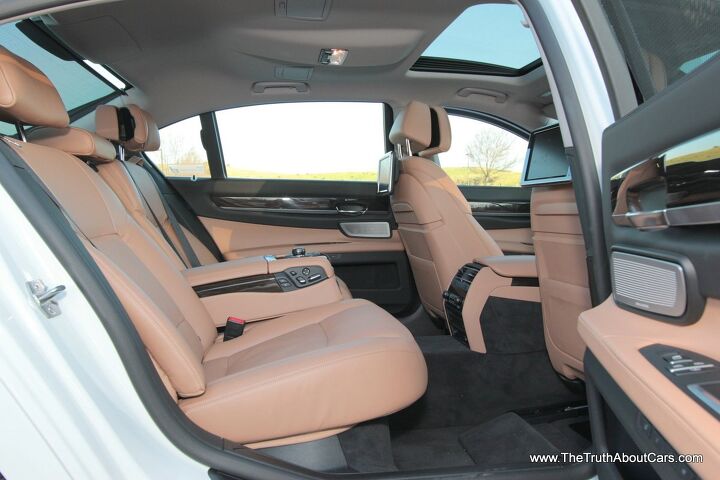








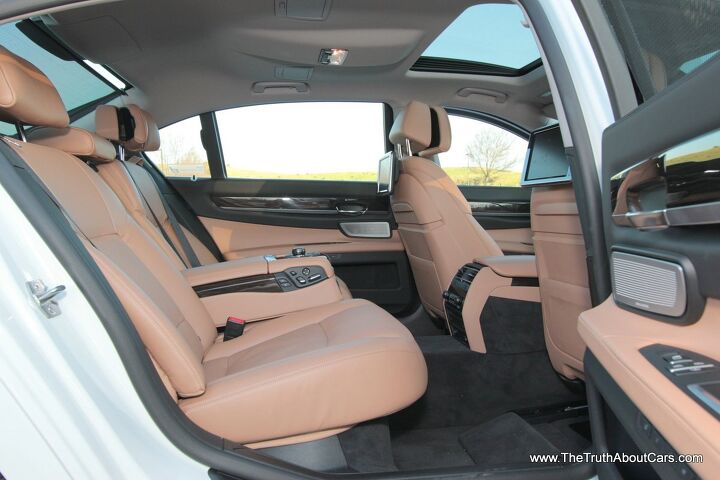








































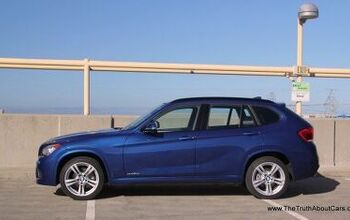
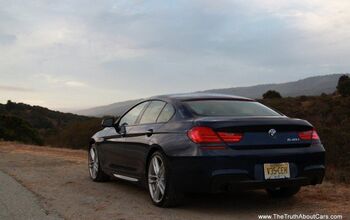
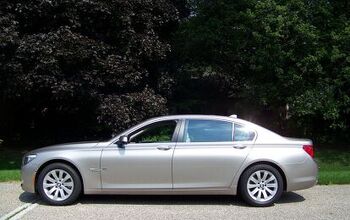












Comments
Join the conversation
HANDLING!!!! Who drives these German behemoths anywhere near their capabilities anyway? I drive a 530i and I really can't have fun in it here in the DFW area without attracting the attention of the local GARDA. Maybe if you are in rural areas hooning you can have fun. I just can't see most of the grey hairs who buy these standing on them to see how fast they can drive through hill country. Mostly they are very comfortable commuters with top notch interiors than can do the 40 to 80 mph freeway entry with ease and never intrude on your smooth jazz with unwarranted or ungainly engine noise. This isn't Europe of even Puerto Rico, where aggressive driving is the norm, here driving for most seems to be the necessary evil to get from point A to B.
ita always nice to see the cars that will be in the no credit required lots in three years.